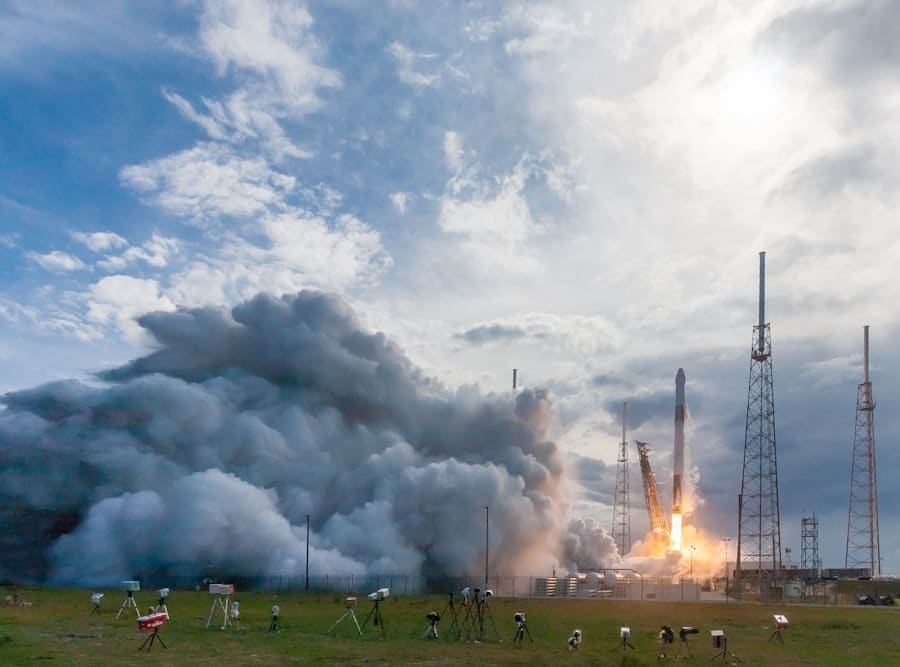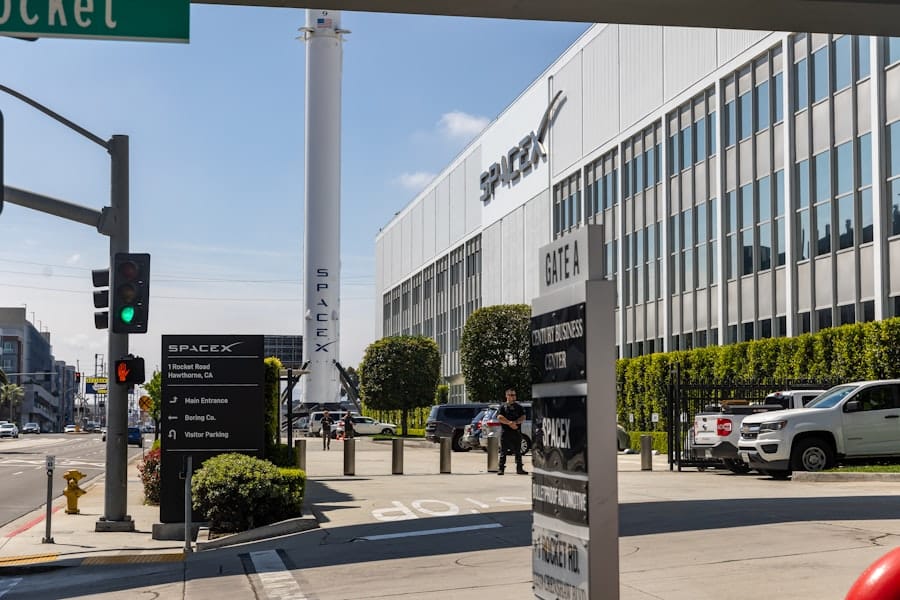SpaceX, founded by Elon Musk in 2002, has emerged as a pivotal player in the realm of space exploration and commercialization. Its mission to reduce the cost of space travel and make it accessible to a broader range of entities—governments, private companies, and even individuals—has fundamentally altered the landscape of space access. By leveraging innovative technologies and a bold vision, SpaceX has not only advanced the capabilities of space travel but has also opened the door for new players in the industry.
This democratization of space access is not merely a matter of lowering costs; it encompasses a broader shift in how humanity interacts with space, fostering collaboration and competition that were previously unimaginable. The implications of SpaceX’s efforts extend beyond mere economics. The company has ignited a renewed interest in space exploration, inspiring a new generation of scientists, engineers, and entrepreneurs.
As barriers to entry diminish, more organizations are entering the field, leading to a surge in innovation and creativity. This transformation is reshaping our understanding of what is possible in space, encouraging diverse missions ranging from satellite deployment to interplanetary exploration.
Key Takeaways
- SpaceX has played a significant role in democratizing space access by making it more affordable and accessible to a wider range of customers.
- The evolution of space exploration has seen a shift towards private companies like SpaceX, which have brought about significant innovations in space access.
- SpaceX’s innovations, such as reusable rockets, have had a profound impact on space access by reducing costs and increasing efficiency.
- Reusable rockets have revolutionized space access by making it more sustainable and cost-effective, leading to a significant reduction in the overall cost of space missions.
- Cost reduction is crucial in space access, and SpaceX’s technologies have been instrumental in driving down the expenses associated with space exploration.
The Evolution of Space Exploration
The journey of space exploration has been marked by significant milestones, beginning with the launch of Sputnik 1 by the Soviet Union in 1957. This event heralded the dawn of the space age and set off a fierce competition between superpowers during the Cold War. The Apollo program, culminating in the moon landing in 1969, showcased human ingenuity and ambition but also highlighted the immense costs and risks associated with space missions.
For decades, access to space was largely confined to government agencies and a few select contractors, creating a landscape where innovation was stifled by bureaucracy and high financial barriers. As technology advanced, so did the potential for private sector involvement. The 1980s and 1990s saw the emergence of commercial satellite launches, but it wasn’t until the early 2000s that private companies began to challenge the status quo significantly.
The advent of smaller, more efficient rockets and advancements in materials science paved the way for new entrants into the market. Companies like SpaceX capitalized on these developments, introducing innovative approaches that would eventually lead to a paradigm shift in how space missions are conceived and executed. This evolution has been characterized by an increasing recognition that space is not solely the domain of governments but can be accessed and utilized by a diverse array of stakeholders.
The Impact of SpaceX’s Innovations on Space Access

SpaceX’s innovations have had a profound impact on space access, fundamentally altering how missions are planned and executed. One of the most significant contributions has been the development of the Falcon 1, Falcon 9, and Falcon Heavy rockets.
This approach not only reduces costs but also increases launch frequency, enabling more organizations to consider space missions as viable options. Moreover, SpaceX’s commitment to transparency and collaboration has fostered an environment where knowledge sharing is encouraged. By making its technology available to other companies and organizations, SpaceX has catalyzed a wave of innovation across the industry.
The company’s open-source approach to certain technologies has inspired startups and established firms alike to explore new possibilities in satellite technology, payload delivery systems, and even crewed missions. This collaborative spirit is essential for advancing human presence in space and ensuring that exploration is not limited to a select few.
The Role of Reusable Rockets in Space Access
Reusable rockets represent one of the most transformative innovations in modern space exploration. Traditionally, rockets were single-use vehicles that incurred significant costs with each launch. The development of reusable systems by SpaceX has changed this paradigm dramatically.
The Falcon 9 rocket’s first stage can land back on Earth after launch, allowing it to be refurbished and reused for subsequent missions. This capability has led to substantial cost savings—estimates suggest that reusability can reduce launch costs by up to 30% or more. The implications of reusable rockets extend beyond mere economics; they also enhance reliability and safety.
With each successful recovery and refurbishment, SpaceX gathers valuable data that informs future designs and operational procedures. This iterative process fosters continuous improvement, leading to more robust systems capable of handling increasingly complex missions. As other companies begin to adopt similar technologies, the entire industry stands to benefit from enhanced efficiency and reduced risk.
The Importance of Cost Reduction in Space Access
Cost reduction is perhaps the most critical factor in democratizing access to space. Historically, launching payloads into orbit was prohibitively expensive, often limiting participation to well-funded government agencies or large corporations. SpaceX’s innovations have significantly lowered these costs, making it feasible for smaller companies and even academic institutions to engage in space activities.
For instance, the price point for launching small satellites has dropped dramatically due to SpaceX’s rideshare programs, which allow multiple payloads to share a single launch. This reduction in costs has spurred a surge in satellite deployment for various applications, including Earth observation, telecommunications, and scientific research. Startups focused on developing innovative technologies can now afford to test their ideas in space without requiring massive funding rounds or government contracts.
As a result, we are witnessing an explosion of creativity and experimentation in the field—new business models are emerging that leverage satellite data for everything from agriculture to disaster response.
The Future of Space Access with SpaceX’s Technologies

Looking ahead, SpaceX’s technologies promise to further revolutionize space access. The Starship program represents a bold leap forward in capabilities, designed for missions beyond low Earth orbit (LEO). With its fully reusable architecture and capacity to carry large payloads or crewed missions to destinations like Mars or the Moon, Starship could facilitate a new era of exploration and colonization.
The potential for interplanetary travel opens up exciting possibilities for scientific research and human settlement beyond Earth. Additionally, as SpaceX continues to refine its technologies, we can expect further advancements in propulsion systems, materials science, and mission planning software. These innovations will likely lead to even lower costs and increased reliability for future missions.
Moreover, as SpaceX collaborates with NASA on initiatives like Artemis—aimed at returning humans to the Moon—there is potential for public-private partnerships that could accelerate progress in space exploration while sharing risks and rewards among stakeholders.
The Implications of Democratizing Space Access
The democratization of space access carries profound implications for society at large. As more entities gain the ability to launch missions into space, we can expect an increase in international collaboration on scientific research and exploration initiatives. Countries that previously lacked access to space capabilities can now participate in global efforts to address challenges such as climate change or resource management through satellite technology.
Furthermore, democratizing access fosters a sense of shared ownership over our collective future in space. As private companies engage in exploration alongside national agencies, there is potential for diverse perspectives and approaches to emerge. This inclusivity can lead to more comprehensive solutions to complex problems facing humanity as we venture into an era where life beyond Earth becomes increasingly plausible.
SpaceX’s Ongoing Contribution to Space Access
SpaceX’s ongoing contributions to democratizing access to space are reshaping our understanding of what is possible beyond our planet. By reducing costs through innovative technologies like reusable rockets and fostering an environment conducive to collaboration and creativity, SpaceX has opened doors that were once firmly closed. As we look toward the future, it is clear that the company’s impact will continue to resonate across industries and nations alike.
The journey toward making space accessible for all is still unfolding, but with each successful launch and mission undertaken by SpaceX and its partners, we move closer to realizing a future where humanity can explore and inhabit other worlds. The implications of this transformation are vast—ranging from scientific advancements to economic opportunities—and they underscore the importance of continued investment in technology that democratizes access to one of humanity’s most profound frontiers: outer space.
In the case study “SpaceX’s Role in Democratizing Space Access,” the focus is on how SpaceX has revolutionized the space industry by making space travel more accessible and affordable. A related article that complements this discussion is found on Enicomp, titled “An Original Home for Technology News and Reviews.” This article provides insights into the latest technological advancements and innovations, including those in the aerospace sector, which align with SpaceX’s mission to democratize space access. For more information, you can read the full article here.
FAQs
What is SpaceX’s role in democratizing space access?
SpaceX’s role in democratizing space access involves making space travel more accessible and affordable for a wider range of customers, including governments, private companies, and individuals.
How has SpaceX achieved this goal?
SpaceX has achieved this goal through the development of reusable rocket technology, which significantly reduces the cost of space launches. Additionally, the company has focused on streamlining its operations and increasing the frequency of launches to further drive down costs.
What impact has SpaceX had on the space industry?
SpaceX’s efforts have disrupted the traditional space industry by offering more competitive pricing and innovative technology. This has led to increased competition and a greater emphasis on efficiency and cost-effectiveness within the industry.
What are some examples of SpaceX’s democratization of space access?
Examples of SpaceX’s democratization of space access include its partnerships with NASA to transport cargo and crew to the International Space Station, as well as its work with commercial satellite companies to launch and deploy satellites into orbit.
What are the potential future implications of SpaceX’s efforts in democratizing space access?
The potential future implications of SpaceX’s efforts include the possibility of more widespread commercial space travel, increased scientific research and exploration opportunities, and the potential for space-based industries to become more economically viable.

